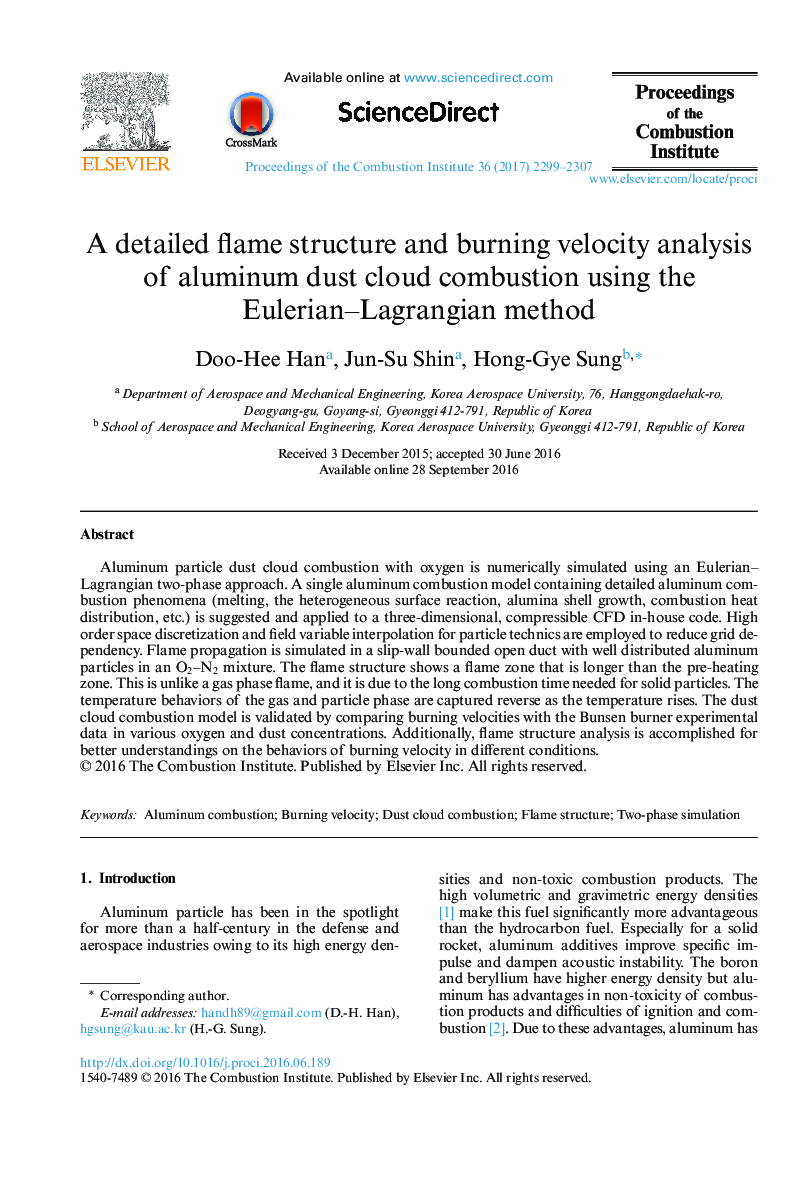| Article ID | Journal | Published Year | Pages | File Type |
|---|---|---|---|---|
| 6478312 | Proceedings of the Combustion Institute | 2017 | 9 Pages |
Aluminum particle dust cloud combustion with oxygen is numerically simulated using an Eulerian-Lagrangian two-phase approach. A single aluminum combustion model containing detailed aluminum combustion phenomena (melting, the heterogeneous surface reaction, alumina shell growth, combustion heat distribution, etc.) is suggested and applied to a three-dimensional, compressible CFD in-house code. High order space discretization and field variable interpolation for particle technics are employed to reduce grid dependency. Flame propagation is simulated in a slip-wall bounded open duct with well distributed aluminum particles in an O2-N2 mixture. The flame structure shows a flame zone that is longer than the pre-heating zone. This is unlike a gas phase flame, and it is due to the long combustion time needed for solid particles. The temperature behaviors of the gas and particle phase are captured reverse as the temperature rises. The dust cloud combustion model is validated by comparing burning velocities with the Bunsen burner experimental data in various oxygen and dust concentrations. Additionally, flame structure analysis is accomplished for better understandings on the behaviors of burning velocity in different conditions.
